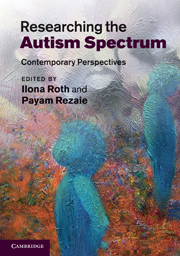Book contents
- Frontmatter
- Contents
- Preface
- Foreword
- List of Contributors
- Introduction
- Part I Classification and Diagnosis
- Part II Genetics, Neurology and Biochemistry
- 2 Unravelling the genetics of autism spectrum disorders
- 3 Brain imaging and the neuroanatomical correlates of autism
- 4 Magnetoencephalography (MEG) as a tool to investigate the neurophysiology of autism
- 5 Autism and epilepsy
- 6 Biochemistry of autism: changes in serotonin, reelin and oxytocin
- Part III Cognition, Development and Education
- Index
- Plate section
- References
2 - Unravelling the genetics of autism spectrum disorders
Published online by Cambridge University Press: 04 February 2011
- Frontmatter
- Contents
- Preface
- Foreword
- List of Contributors
- Introduction
- Part I Classification and Diagnosis
- Part II Genetics, Neurology and Biochemistry
- 2 Unravelling the genetics of autism spectrum disorders
- 3 Brain imaging and the neuroanatomical correlates of autism
- 4 Magnetoencephalography (MEG) as a tool to investigate the neurophysiology of autism
- 5 Autism and epilepsy
- 6 Biochemistry of autism: changes in serotonin, reelin and oxytocin
- Part III Cognition, Development and Education
- Index
- Plate section
- References
Summary
Since autism was first described in 1943, it has become evident that the condition is one of the most heritable of all the childhood onset neurodevelopmental disorders. In this chapter we chart the progress of researchers' attempts to understand the genetic components of autism spectrum disorders and how these studies have tracked the advances in technology and knowledge in the field of genetics in general. We start by describing the evidence that autism spectrum disorders have such a strong genetic component. We then consider approaches to identify susceptibility genes such as linkage, candidate gene studies and association analysis. Various epigenetic mechanisms of potential relevance to autism as well as the expanding area of copy number variations are also highlighted. Some of the theoretical background to each of these approaches is given and findings from each approach are summarized and discussed. In addition, several specific examples are given for each method to demonstrate in detail the way in which they have been employed to yield key successes within the field of autism genetics. Finally, we look towards the future and suggest possible further avenues of investigation, as well as newly arising challenges, in this difficult, yet exciting field of study.
Evidence for genetic liability and the multifactorial model for autism
In 1943, Leo Kanner, an Austrian psychiatrist, was the first to describe a condition observed in a group of eleven children with developmental abnormalities, a disorder that today is known as autism (Kanner, 1943).
- Type
- Chapter
- Information
- Researching the Autism SpectrumContemporary Perspectives, pp. 53 - 111Publisher: Cambridge University PressPrint publication year: 2011
References
- 3
- Cited by



